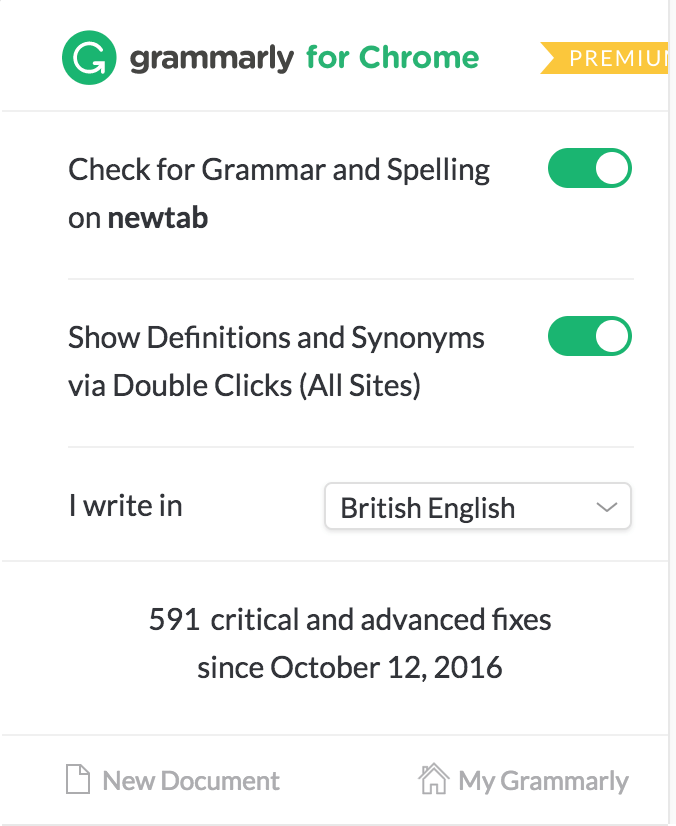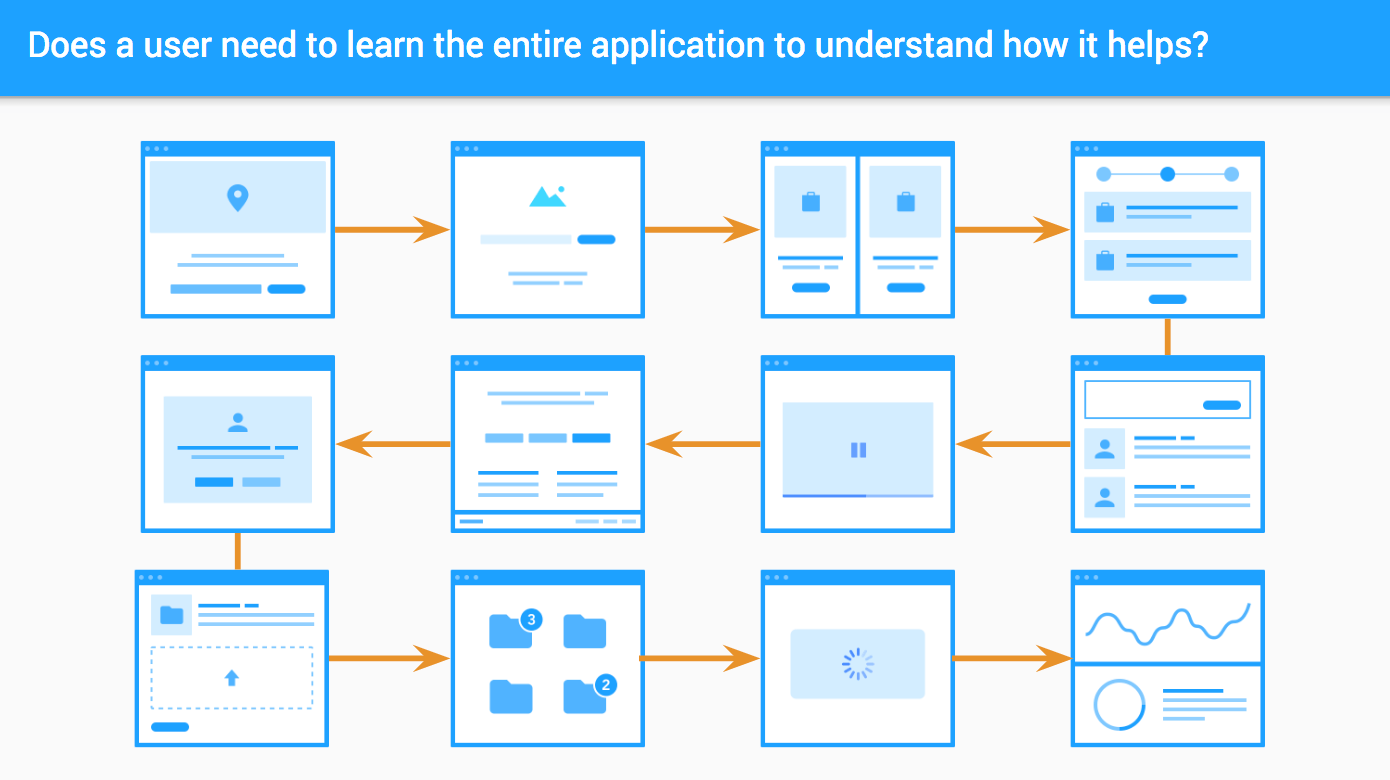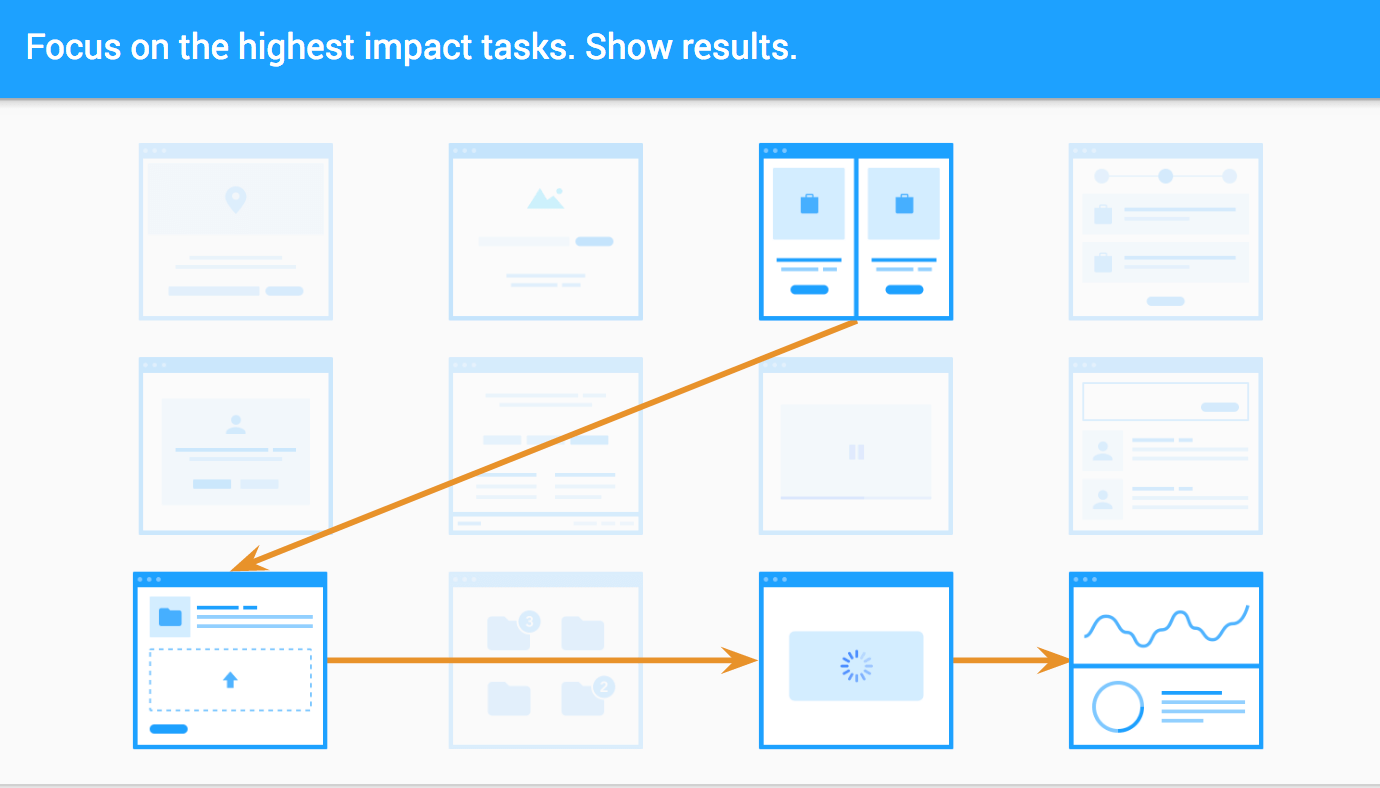User onboarding - How to guide first-time users to success
In this article, we’ll show you how to guide first-time users to success. With in-app guidance, you can show your users how to be awesome with your app. They learn while doing, and experience the benefits of your application ASAP. Here are some practical tips you can apply now.
First-time users need to experience and not just see benefits
Because you designed your application with users’ needs at the centre, your new users will ideally be able to meet their needs with your software. If they don’t, they churn. 40-60 % of users who sign up for a free trial of SaaS application will use it once and never come back.
It’s crucial to demonstrate the value of your service. In order for you to deliver on the expectations you built up in your marketing message, first-time users need to know:
- — What’s possible
- — Why they should do it
- — How to get it done
And what better place than right within your application, while they are using it?
In the face of this pressure, the mistake is to try and show the breadth of product features and capabilities in extensive, rambling product tours. These kinds of tours are more likely to bore your users than they will impress them.
They don’t want a hard sell. The hard selling tactics backfire today. There’s also a new paradox of users who want a fully self-service product yet personalised sales. They want live demos, yet they want free trial access to explore on their own. They want a self-service shopping cart, but they also want to chat - with a person.
And they certainly don’t want to be ignored altogether. Imagine getting to the counter, and no one coming to serve you. A lack of communication could be worse than a miscommunication.
Tip: Your user onboarding experience can address their needs by being fully self-service, and get tailored to their needs. Customise and tailor your user onboarding experience depending on their role.
Communicate your application’s value
“Shut up and take my money!” is the enthusiastic response you want customers to have for your product. To get to that point, a potential customer must know that the value of your service will bring benefits which outweigh the costs. The costs may be financial, but decision makers also the effort invested in setup and use.
When you’re identifying your product’s value and benefits, think less about the specific features of your service, and focus on the outcomes for your customers.
Is your service going to
- — Save them the time they would otherwise spend on doing it themselves?
- — Make it possible for them to do things they couldn’t do otherwise?
- — Help them respond to a situation they are struggling with?
- — Give them an advantage over the competition that isn’t possible without your service?
- — Save them money over another solution?
After that, you can get quite specific about the benefits.
Tip: In your user onboarding experience, clearly state the time or money saved.
Compare the not-so-obvious competition
Decision makers are overwhelmed with options. You probably have your direct market competitors clearly in your sights. But your first-time users may also be considering other alternatives which aren’t so obvious.
For example, some buyers are comparing your service with making no decision at all and delaying the decision. In that case, you can quantify the lost opportunity if they don’t make a choice now. State the benefits they will get in the first month of your service.
In other cases, some customers are comparing an in-house solution. In that case, quantify and compare with the Baremetrics Build v Buy calculator.
- — How much time would it take to build a similar solution in-house?
- — How much time will it take each month to maintain?
- — What is the cost per employee involved in the build?
Even in the most modest estimations with one developer spending a few days on building a solution and a few hours a month to maintain it, doing something in-house can soon become a costly solution.
Particularly for SaaS products relying on recurring subscriptions, your customers need to understand that value continuously. Determine what has the biggest initial impact, and then continue to reiterate that message throughout the customer’s lifecycle.
In this example, Grammarly communicates the numbers of fixes delivered over time.

How can you get users to see the benefits outweigh the costs as quickly as possible?
- — What task demonstrates value in your application?
- — Which task involves creating something new or adding data to your application?
- — Which task shows them results?
Tip: Guide users to the most high-impact activities.


What’s your keystone and aha moment?
Even after they click “buy, when users are in the early stages of the customer lifecycle, they are still evaluating their purchase. If you give them an immediate return on their investment, it will not only fulfil their needs it will also boost their confidence. Lee Markidan at Groove HQ writes that there are “two important milestones” early in the customer lifecycle.
- — The moment they sign up for your product, and…
- — The moment they achieve their first “success” with your product
Most of your marketing efforts are focused on raising product awareness and getting users to sign up. Once they log in - this is where they should hear a clear message and guidance to their first “aha moment.”
One of the most famous “aha moments” in user onboarding lore is Facebook’s focus on “getting to 7 friends in 10 days.” This keystone galvanised hundreds of people to work towards one goal, eventually bringing Facebook on the path to 1 billion users.
Chamath Palihapitiya’s job at Facebook was to try and increase Facebook’s user base in 2005. In this video Chamath explained how they honed a simple and elegant understanding of product value and user behaviour.
Chamath credits their success with the decision to completely reject any product plans about “virality.” He wouldn’t let the conversation revolve around the idea of trying to trick and spam users into signing up. Instead, they focused on the three challenges any consumer product has to deal with.
- — How to get people in the front door?
- — How to get them to an “Aha” moment as quickly as possible?
- — How do you deliver core product value as often as possible?
He explained that a massive amount of complexity could be expressed simply. Famously, for Facebook, the aha moment is “get to 7 friends in 10 days.” It’s under these conditions that the users see the value of the application, and have their first a-ha moment.
For him, it didn’t matter whether “7 friends in 10 days” was a perfect metric. It gave his team focus. Hundreds of people were working towards one goal, and they talked about nothing else. He called this a keystone.
To discover that keystone, he advised people to start by looking at an engaged user. What does their success look like and how did they get there? You can’t rely on your gut, he explained, you have to listen to users and observe their behaviour.
“All Analytics does is it tells you WHAT. It very rarely answers with conviction WHY,” said Daniel Rowles and Ciaran Rogers in the The Digital Marketing Podcast. You need to gather both quantitative data and qualitative data.
Liam Gooding at Trak.io advises you do two things.
Look at the usage data.
- Which features are they using?
- What documentation pages are they reading?
- What emails are they opening?
Have a conversation.
- Speak to existing customers.
- Which features were integral to making the decision?
This information is valuable because it tells you what successful customers behaviours are, and it explains why.
The best way to get qualitative usage data? Listen to your customers. The CEO of GrooveHQ managed to talk with 500 customers in 4 weeks.
Data about customer activity will help you identify successful customer behaviours, so you can guide users to success.
Tip: When you identify your keystone, focus your team’s efforts and your customer’s attention on that goal. It doesn’t need to be a perfect metric, but the message needs to be crystal clear. You’ll learn more about the customers by doing this, and you can continue to iterate.
User onboarding in a free trial: Try before you buy
Free trials are the most common strategy to engage potential customers in a purchase decision. In Pacific Crest’s 2015 Private SaaS Company Survey 30% of respondents derive revenue from Freemium strategies, but “virtually no one drives their business on it.” Instead, “Try before you buy” is more common, with 60% of respondents deriving revenues through this strategy.
The trial experience exists among other marketing and support channels. The messaging around the service and the actual experience should be consistent through all the channels. Lincoln Murphy says “The seeds of churn are planted early.” Particularly if aggressive sales practices over-promise unrealistic benefits.
There are high-touch methods which are effective. Sales team members will reach out to prospects through email responses. These may initiate demos or invitations to webinars. These live experiences provide opportunities for prospective customers to ask for and receive help from a real person.
Customers can reach out to your support team and experience what the full service is like. Groove HQ discovered that customers were 350% more likely to convert if they sent emails to the support team. A great support experience is an excellent demonstration of your service.
Those high-touch experiences are costly to scale. This is why it’s important to optimise and automate as much self-service as possible.
Within the app, product tours should focus on guiding new users to the same behaviours of successful users. Documentation and help resources should be readily available from within the application. You can send drip emails either triggered based on a schedule to triggered through their interactions in your application.
Tip: The free-trial is one aspect of your future customer’s decision-making process and conversion experience. With consistency and coordination, these tools choreograph the user’s experience around your product and service.
Conclusion
A wealth of options confronts decision makers. They’re considering your competition, and if they’re exhausted by search, they may even opt to do nothing at all.
When they do sign up, it’s your chance to clearly demonstrate whatever benefits you promised in your marketing message. The more clear this message is, the better. Your team will be able to rally around and focus their efforts. And your users will notice this when they compare their options. The sooner they get value, the more likely they are to stick around.
And that means happy customers who stick around!
If you’d like to start guiding your users to success right now, sign up for our 14 day trial.
Subscribe to our newsletter
The latest news, articles, and resources, sent to your inbox weekly.